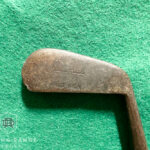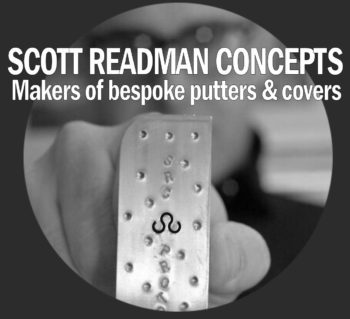Ok, so there’s a lot to unpack here. The big news following the conclusion of the 2019 Safeway Open was that quite a few players’ drivers were deemed “non-conforming” under the new PGA Tour testing process this past week. According to Reuters, this left a lot of players questioning how accurate the new process really is given such a large number of “failed” clubs. Apparently these players sent their non-conforming driver heads back to the manufacturers for further testing. Interestingly, the non-conforming results were spread across multiple manufacturers.
The non-conforming drivers are from across the manufacturing spectrum, including major brands such as Titleist, TaylorMade and Cobra, two insiders with knowledge of the matter said.
The Tour is measuring something called “CT” or “characteristic time.” Think of this as spring or trampoline effect of the driver face at impact. (Maybe we’ll do a whole CT/trampoline effect post some other time.) Now, it’s generally believed that these non-conforming driver heads were indeed conforming when the players first put them into play. An equipment manufacturer rep told Reuters this on Sunday:
“They all start off legal and then the face starts to deform and the CT number increases,” he told Reuters, explaining that even non-conforming clubs confer little if any advantage.
::Record scratch stop sound effect here:: Wait, you mean driver faces are changing over time? This brings a whole new conversation topic to the forefront for me! Do drivers wear out over time and lose their pop? I get asked this question all the time! I’ve seen that topic discussed at length many times in golf forums with real experts weighing in. The conclusion always seems to be that no, drivers do not wear out or lose their pop. Frankly, I’ve always disagreed, but I’ve never seen any scientific proof for either side so I just accept it as a “maybe.” Well now I don’t know if I can accept “maybe” anymore…
What we have here is an equipment rep telling us that “yes, the faces do deform over time due to use.” To be fair, it sounds more like they’re saying the driver would get MORE pop with some use. Ok, fine, but the fact is that this rep is admitting that the faces do change over time so it’s reasonable to think there would be diminishing returns at some point, no? Sure, there’s more life at first, but enough deformation over long periods of time could result in a reduction of that spring effect?
Here’s what I’m most curious about now – has anyone tested Brandt Snedeker’s 2010 Burner SuperFast driver? I’d be very curious to see how well that thing scores in either direction.
The PGA Tour’s New Driver Testing Process
For those interested in further detail around the new driver testing process used by the PGA Tour, here’s a link. In early September, the PGA Tour announced the new process and released a memo to the players. Here are a few excerpts from the memo explaining the changes.
- To assist with the testing process, each manufacturer who has driver heads in play on the PGA TOUR will appoint one representative who will be the on-site contact when testing is occurring. To maintain confidentiality, this representative and the player will be the only people who are notified of the results of the test.
- At various times throughout the season, and on an unannounced basis, testing will occur at PGA TOUR events. The testing will occur on non-competition days when manufacturer
representatives are on-site. - Actual CT values will not be provided, but rather results will
be delivered in the following categories:
GREEN – The club is conforming and may be used in subsequent rounds.
YELLOW – The club is conforming and may be used in subsequent rounds, but the result is within the USGA published tolerance. This means that during any subsequent testing there is a higher likelihood that the club, when tested, will exceed the limit plus tolerance. Continued usage of the club could further increase the likelihood that the club will exceed the limit plus tolerance.
RED – The club is deemed to have been damaged into a non-conforming state and as such may not be used in subsequent rounds. - All clubs which are tested will have their serial numbers recorded. Clubs which have test results that are green or yellow will be returned to the player. Clubs which have test results which are red will be returned to the manufacturer representative.
You can find the full memo and explanation in the PGATour.com link provided above.
















